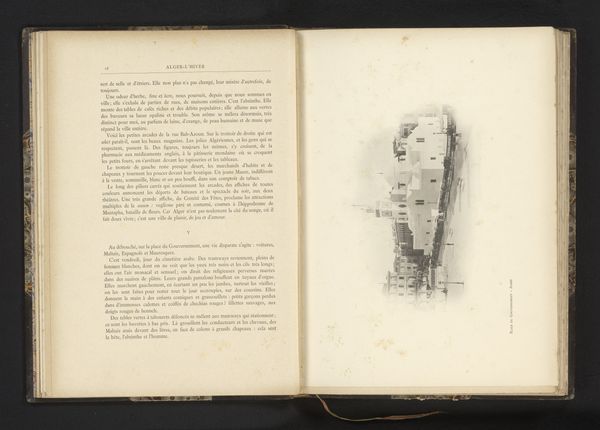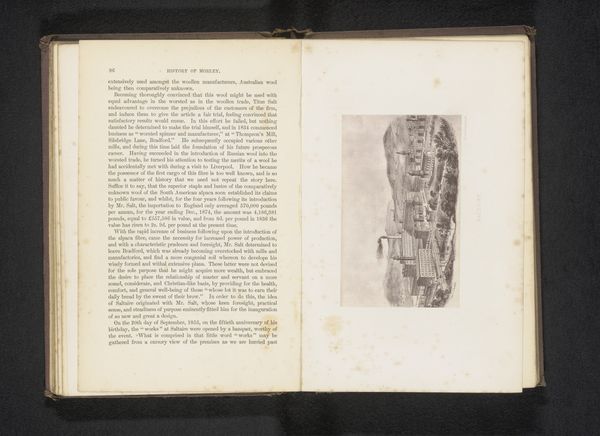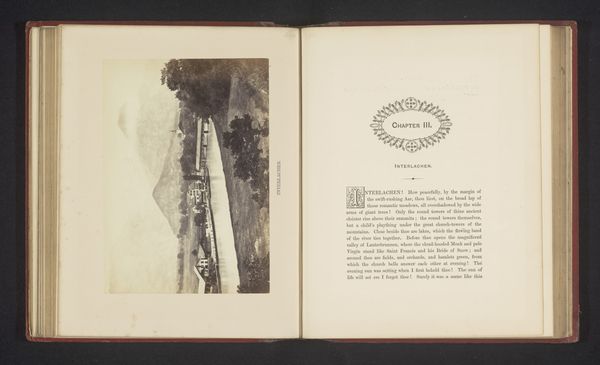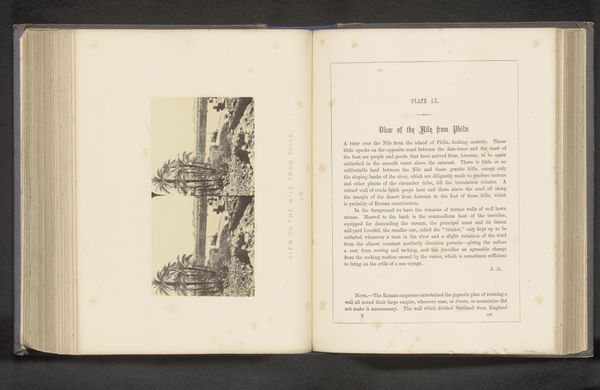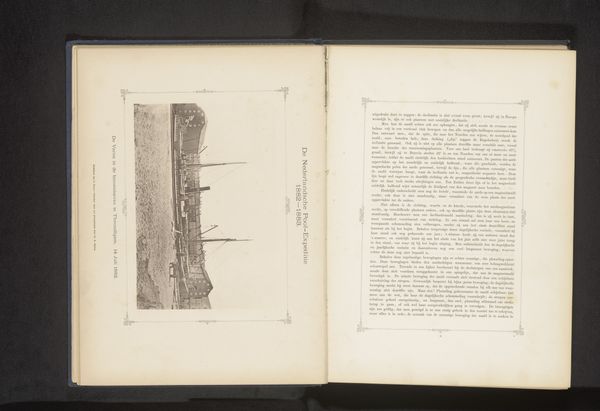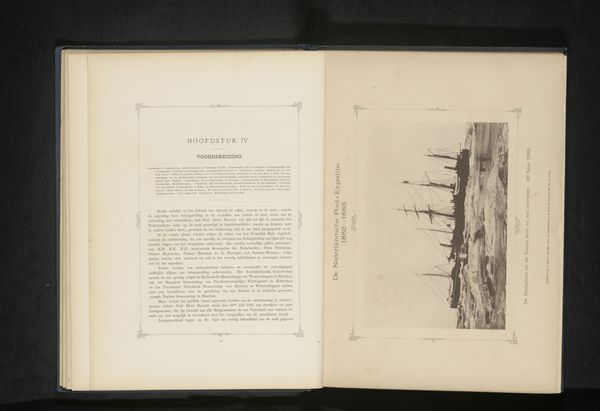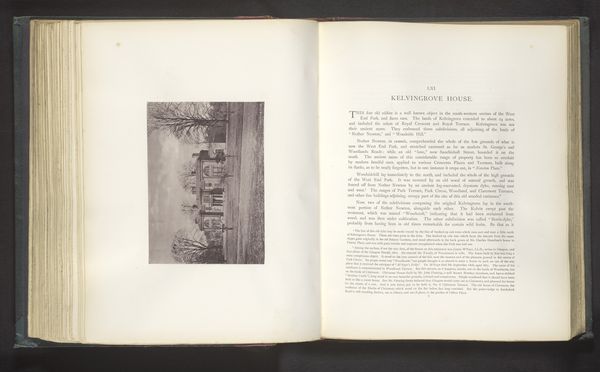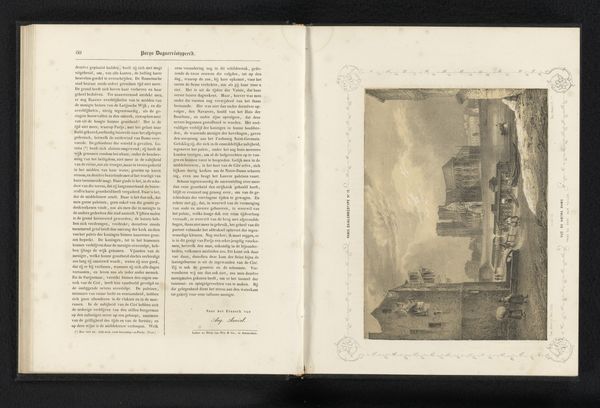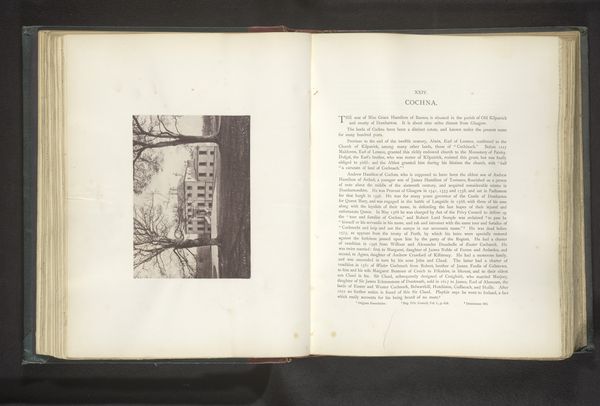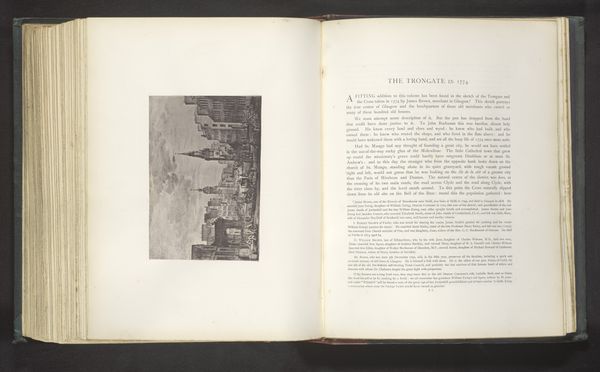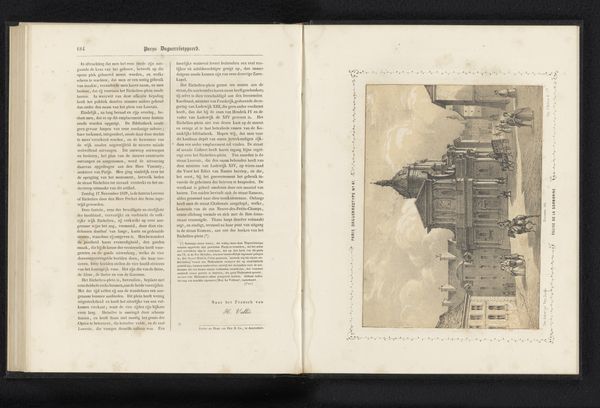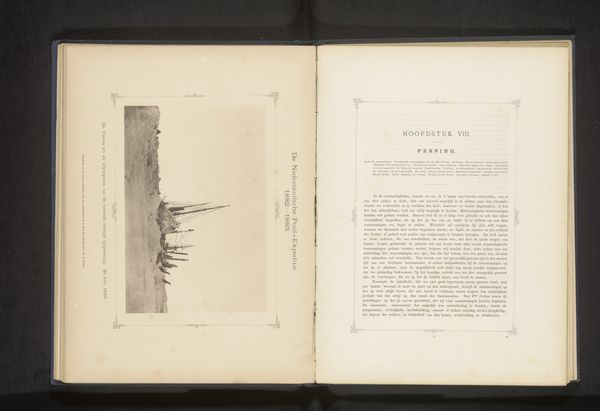
Reproductie van een prent van een ontwerp voor het paleis van de Wereldtentoonstelling in 1883 te Amsterdam before 1883
0:00
0:00
lithograph, print
#
art-nouveau
#
lithograph
# print
#
orientalism
#
cityscape
Dimensions: height 120 mm, width 245 mm
Copyright: Rijks Museum: Open Domain
Curator: Here we have a lithograph reproduction, predating 1883, depicting Emile Aubry’s proposed design for the Palace of the World Exhibition in Amsterdam. It’s fascinating to consider such an ambitious structure. Editor: Immediately, I’m struck by the asymmetry. The towers lean right, the bridge is far from centered, creating this strangely off-kilter yet harmonious tension. Curator: Notice the lithographic technique, allowing for intricate details in the architectural rendering. One can see the modular construction in the sketch which is clearly derived from the material limitations. Editor: Exactly. Observe the line work here - the texture creates depth, transforming the static design into a visual feast. The choice of the monochromatic palette emphasizes this textural complexity. Curator: Given the context of world exhibitions, this work served not merely as aesthetic rendering, but as a prospectus, aimed at attracting investors and garnering support. Consider too the implicit labor of Aubry to produce the piece, but also those whom would realize the exhibition and those that would support it's patronage. Editor: Agreed. Beyond function, this piece reveals subtle tensions inherent in cityscapes. Linear aspects, combined with varied light and shadow effects, capture the dynamic essence of urban development. Curator: It's clear this representation attempts to instill an optimism and national pride to those whom look at it. There's an orientalist bend to the structure, as a world fair should demonstrate progress. Editor: True, and analyzing the Orientalist touches provides insights into art movements from a structuralist angle. It underscores that even design concepts embed wider aesthetic traditions. Curator: Ultimately, the intersection between Aubry’s lithographic reproduction and world’s fair politics creates rich dialogue, a compelling synthesis. Editor: It serves as reminder how buildings exist both as cultural icons and constructed forms where aesthetic consideration meets utilitarian intention.
Comments
No comments
Be the first to comment and join the conversation on the ultimate creative platform.
